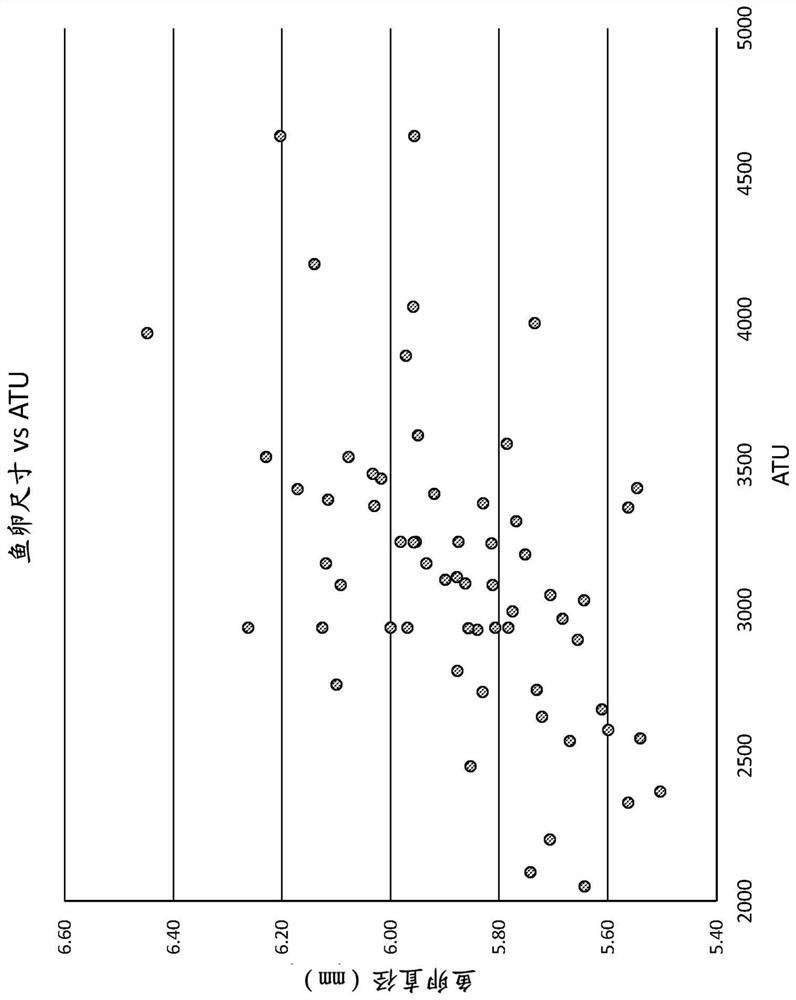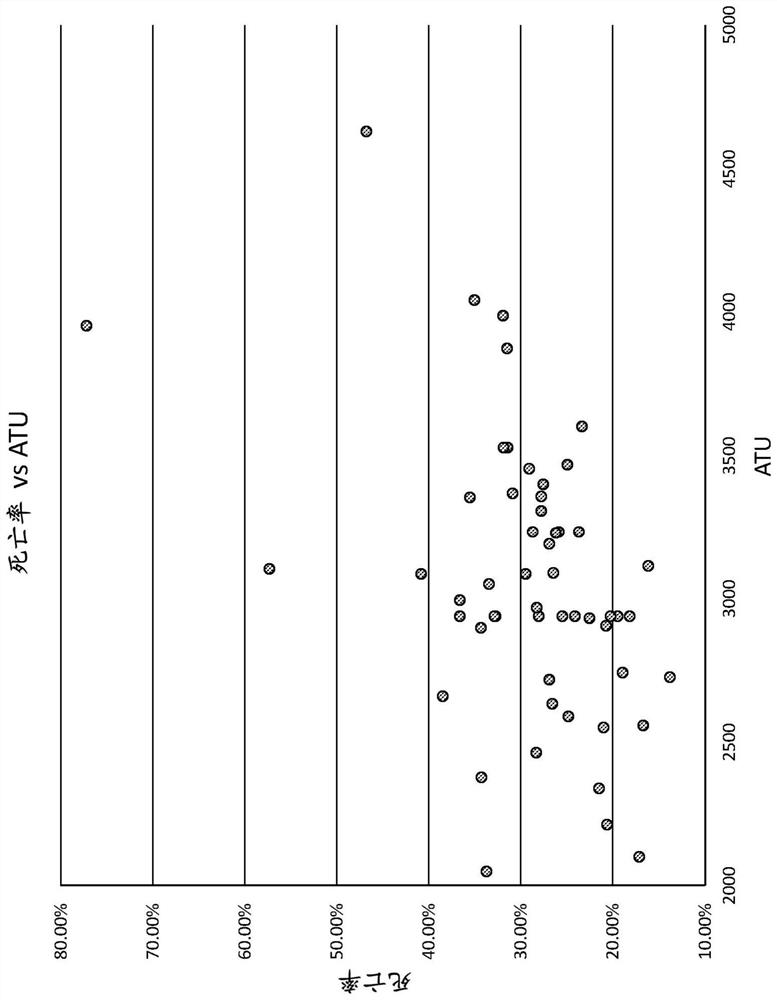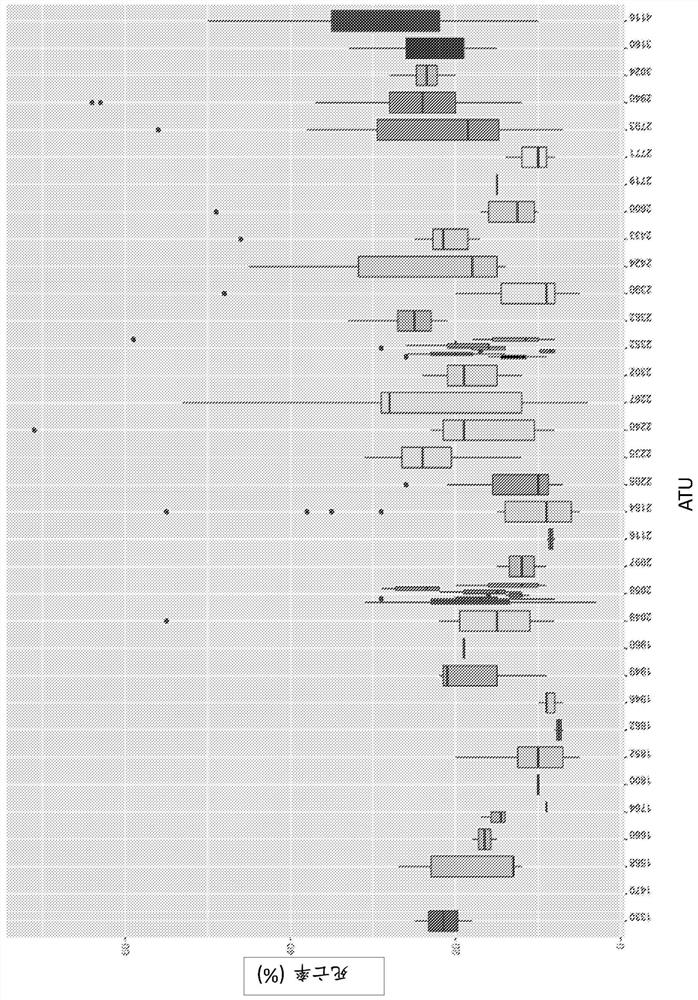Aquaculture process for production of salmon eggs
A technology for aquaculture, salmon, applied in the field of spawning from Atlantic salmon, which can solve problems such as difficult separation and complex interaction
- Summary
- Abstract
- Description
- Claims
- Application Information
AI Technical Summary
Problems solved by technology
Method used
Image
Examples
Embodiment 1
[0119] Atlantic salmon strains were reared in closed freshwater tanks in Kollafjordur, Iceland.
[0120] After silvering, smolt is then reared at two sites, Kalmanstjorn and Vogavik (Iceland). Rearing takes place in recirculating land-based tanks using water from the surrounding area.
[0121] Initially, each group contained an average of approximately 2000 silverized fish, housed in two tanks, and results are expressed as the mean value per group.
[0122] During rearing, changes were made to parameters (temperature and time) during the first simulated winter period after silverization, while other conditions were kept relatively constant during subsequent simulated summer and winter periods until egg harvest.
[0123] Table 1. Summary of salmon rearing batches.
[0124]
[0125] The results are summarized in Table 1. It can be seen that at very high ATU there is a rather sharp increase in egg mortality, which offsets the apparent increase in egg size with increasing ...
Embodiment 2
[0127] To further investigate the effect of ATU on egg quality, rearing results of a total of 62 groups of Atlantic salmon obtained over a period of several years were analysed. Each group was reared under the conditions described above. Based on the measurement of the number of fish eggs per unit volume (L), the average fish egg diameter was calculated assuming that the fish eggs were spherical with uniform size.
[0128] from figure 1 It can be seen that there is a clear and strong correlation between average fish egg size and ATU (up to about 4000 ATU). However, if figure 2 As shown, the average fish egg mortality increased only slightly in this ATU range.
[0129] However, at very high ATU, the average egg size tends to stabilize. At the same time, the mortality rate of fish eggs increased, indicating that there is an upper limit of ATU for obtaining high-quality fish eggs.
[0130] These experiments indicated that for optimal egg harvest with high egg quality (size)...
Embodiment 3
[0132] A total of 46 groups of salmon reared at two Icelandic sites (Kalmanstjorn and Vogavik) were analyzed for egg size and mortality, comprising a total of 324 batches.
[0133] The feeding conditions were as described in Example 1. Salmon are silvered and then reared to an average size of about 4 kg per fish under simulated summer conditions (an average of about 22 hours of light exposure every 24 hours) before beginning the winter-summer period during which, Average light exposures were about 8 hours (winter) and 22 hours (summer), respectively.
[0134] Mortality (average ATU over the incubation period of eggs) was assessed at the ocular stage. Egg size was determined as the total number of eggs per liter of volume.
[0135] In total, 238 million eggs were analyzed. Data were analyzed using the RStudio program. Normality and homogeneity of variances were determined by the Shapiro-Wilk test (P>0.05). After accepting the normal distribution of the data, one-way ANOVA ...
PUM
 Login to View More
Login to View More Abstract
Description
Claims
Application Information
 Login to View More
Login to View More - R&D
- Intellectual Property
- Life Sciences
- Materials
- Tech Scout
- Unparalleled Data Quality
- Higher Quality Content
- 60% Fewer Hallucinations
Browse by: Latest US Patents, China's latest patents, Technical Efficacy Thesaurus, Application Domain, Technology Topic, Popular Technical Reports.
© 2025 PatSnap. All rights reserved.Legal|Privacy policy|Modern Slavery Act Transparency Statement|Sitemap|About US| Contact US: help@patsnap.com



